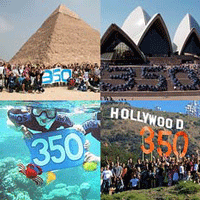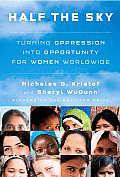 There is much to do and many ways to set a course for good in this world! And Make A Difference Day on the fourth Saturday in October, is a great way to begin exploring your passion and potential legacy project. Here are a few extraordinary legacy project stories to give you ideas from the example of some remarkable people who have visions, hearts and hands, found the personal fortitude and external resources they needed, and set out to generate more good in the world.
There is much to do and many ways to set a course for good in this world! And Make A Difference Day on the fourth Saturday in October, is a great way to begin exploring your passion and potential legacy project. Here are a few extraordinary legacy project stories to give you ideas from the example of some remarkable people who have visions, hearts and hands, found the personal fortitude and external resources they needed, and set out to generate more good in the world.
Maybe some of these will trigger a quiet longing or have you look around your community in a different way. Follow your heart, your values, what calls you to action. Be inspired by an area of impact you’d like to enhance and extend. And remember, your legacy project can be as large or as small as you wish! Look around your community and see what you choose to do!
Projects that Impact the Earth
Earth Day
This holiday is now celebrated in the U.S. and now around the world. It was first conceived in 1962 by Gaylord Nelson, Wisconsin’s 35th Governor and that state’s U.S. Senator from 1963-1981, and it evolved over a period of years. Nelson was concerned that the state of the environment was a non-issue in U.S. politics and needed more visibility. He worked with then Attorney General Robert Kennedy and President John Kennedy to schedule a five-day, eleven-state ‘national conservation tour’ in September 1963. Earth Day really took hold after Cleveland’s Cuyahoga River, all but dead from industrial sludge discharge, caught fire in 1969. This Earth Day environmental legacy spawned a chain of events, and people who individually, in different ways, took on the underlying concerns as their own individual projects … which became their personal legacies. The resulting momentum and synergy literally created the environmental movement as we know it today.
A Legacy Explodes Internationally
 Last year, journalists called it “the most widespread day of political action in the planet’s history”! Citizens in over 180 nations staged actions on International Day of Climate Action to demand a quicker response to climate change. The New York Times covered it on the front page. In Times Square people watched images of this movement flood in from every corner of the world on jumbo-tron screens. More than 5200 separate events were held around the globe. “These are the kinds of crowds that turn out for rock stars or charismatic politicians, but instead they are rallying around a scientific data point, they’re asking our leaders to lead — to pay attention to scientific reality, not political convenience” said founder, Bill McKibben. He has grown his legacy through a book, and website devoted to teaching people the relevance of the number 350 (parts per million of carbon in the atmosphere). This year, the second Climate Action Day was celebrated on 10-10-10 (October 10th, 2010) with work parties in 7000-plus separate events in about 188 countries. One man, concerned about one issue, now with a small and very committed team, has built a global effort involving millions of people on all continents. In 2010 even U.S. President Obama committed to returning solar panels to the White House (first installed by President Carter, and taken down by President Reagan).
Last year, journalists called it “the most widespread day of political action in the planet’s history”! Citizens in over 180 nations staged actions on International Day of Climate Action to demand a quicker response to climate change. The New York Times covered it on the front page. In Times Square people watched images of this movement flood in from every corner of the world on jumbo-tron screens. More than 5200 separate events were held around the globe. “These are the kinds of crowds that turn out for rock stars or charismatic politicians, but instead they are rallying around a scientific data point, they’re asking our leaders to lead — to pay attention to scientific reality, not political convenience” said founder, Bill McKibben. He has grown his legacy through a book, and website devoted to teaching people the relevance of the number 350 (parts per million of carbon in the atmosphere). This year, the second Climate Action Day was celebrated on 10-10-10 (October 10th, 2010) with work parties in 7000-plus separate events in about 188 countries. One man, concerned about one issue, now with a small and very committed team, has built a global effort involving millions of people on all continents. In 2010 even U.S. President Obama committed to returning solar panels to the White House (first installed by President Carter, and taken down by President Reagan).
Projects that Impact Education
A Living Legacy Carries Forward
Candace “Dacie” Moses demonstrated that everyone can contribute something — and with the right planning, what lives on beyond our lifetimes can simply be an extension of what was joyfully given during them. She was a librarian at the Carleton College in Northfield, MN, in the U.S. and the legacy she defined and lived, then left for future generations is the Dacie Moses House, where students gathered for freshly baked cookies, Sunday brunches (for up to 50 people), to hold conversations, watch TV or play the piano, snack from her refrigerator or call home from her phone. Dacie wanted that to endure, so before she died in 1983 at the age of 97, she donated her house to the Carleton Alumni Association. Her will instructed that it be used as it was during her lifetime — a hostel for students and alumni, an upstairs rented apartment that generated funds to maintain and improve the property. In a separate trust, she provided funds to pay for cookie making supplies and the cost of the Sunday brunches. From the conviction of her values, her joy in life and a little bit of property, Dacie Moses both lived and consciously created an enduring legacy.
Building On A Great Idea
One of the ways to begin acting on a legacy idea is to examine what others are doing, and possibly fit the project you design in with an existing organization. Legacy builders and veterinary students, Alison Barnstable and Laurel Redding, attached their project to both the University of Pennsylvania School of Veterinary Medicine (where they were students) and later Heifer International by initially creating their legacy in the form of a research grant application called “Increasing Agriculture Productivity in Developing Countries.” They sought to have the Veterinary profession become more involved with addressing world hunger through a contribution to public health, knowing the importance of safeguarding animal health for human health. Including a plan to work with Heifer International — the organization started by farmer Dan West, devoted to distributing livestock and providing training for people around the world in environmentally sound agricultural practices integrating both farming and ranching — they received the grant. Their plan exposes other Vet students to public health and world hunger issues, gets them involved in helping to train community animal health workers and establishes information networks that allow Veterinarians to use their skills to have a greater impact in the lives of people worldwide.
Projects that Impact Girls and Women
Girl Power
There are 600 million adolescent girls living in poverty in the developing world. The Girl Effect is an incredible legacy project addressing this problem by focusing on solutions to major global issues like overpopulation, infant mortality, child health and community development, by focusing on these girls. A corporate responsibility project, it was begun in 2004 as the work of the Nike Foundation, the non-profit organization founded by NIKE, Inc. They’ve discovered that when girls have safe places to meet, education, legal protection, health care, and access to training and job skills, they can thrive — and they influence others to thrive, too.
Hope for Women Worldwide
 Husband and wife team, Nicholas D. Kristof and Sheryl WuDunn created a legacy in the form of a book called Half the Sky that has grown into a movement, because they felt strongly that women need protective laws, including the right to hold property and bank accounts … but as they write, “Westerners invest too much effort in changing unjust laws and not enough in changing culture, by building schools or assisting grassroots movements.” They know cultural changes are needed everywhere, maybe even in your local community. Could you support a woman or girl to stay in school or further their education, or participate with a group that benefits women? It would be a great way to get started.
Husband and wife team, Nicholas D. Kristof and Sheryl WuDunn created a legacy in the form of a book called Half the Sky that has grown into a movement, because they felt strongly that women need protective laws, including the right to hold property and bank accounts … but as they write, “Westerners invest too much effort in changing unjust laws and not enough in changing culture, by building schools or assisting grassroots movements.” They know cultural changes are needed everywhere, maybe even in your local community. Could you support a woman or girl to stay in school or further their education, or participate with a group that benefits women? It would be a great way to get started.
Giving Women a Home
For Constance Collins-Margulies, seeing a homeless person for the first time at age 13, left an indelible mark in her heart and soul. It imprinted a question: “How can any of us be happy as long as one of us lives like this?” 40 years later, she set up the Sundari Foundation to promote the education, advancement and social inclusion of poor, disadvantaged and homeless women and children. The nonprofit’s first project was the Lotus House Women’s Shelter in Miami, a shelter that takes a holistic approach to care for its residents on every level: body (through medical, dental, eye care and even safety training), mind (through counseling, mental health treatments and support groups and running a Thrift Shop to learn skills and raise funds for the project) and spirit (through things like art, music, crafts, book clubs, gardening, and field trips).
Projects that Impact Health
Pivotal First Step Creates Free Clinic
Faith Coleman was a nurse practitioner without health insurance when learned she had a malignant tumor growing on her right kidney. Her treatment cost about $35,000 and she mortgaged her home to pay for it, gaining with that experience the insight and determination to make a difference for others who likewise needed access to appropriate medical treatment. After her recovery, she mustered up her courage and took one pivotal step, approaching a local physician with 60 years experience treating the indigent population, Dr. John Canakaris, with her idea for a free clinic — and to her surprise he agreed. Their efforts created the Flagler County Free Clinic in Florida, which started with eight volunteers treating eight patients and where now about 120 volunteers see about 80 patients every other weekend.
Projects By and For Youth
From The Hands Of Babes
Austin Gutwein wouldn’t have called it a legacy when he started at age 10. He just knew he wanted to make a difference when he learned about children his age in Africa orphaned because their parents contracted a disease called HIV/AIDS. So he decided to use something he knew and loved, basketball, as a way to help. On World AIDS Day 2004, Austin pledged to shoot 2,057 free throws, representing the number of children orphaned in a single school day because of AIDS. He got sponsors for his effort, and raised almost $3,000 USD that day — and then duplicated the effort with other kids around the country to create Hoops of Hope. His project is now connected to a humanitarian organization called World Vision, and the project he started has now raised over $1,000,000 for building a school and two medical testing labs in Zambia, providing caregiver kits and furnishings, building a water system in Kenya, and providing bicycles for caregivers … and enduring help and hope for many to come.
If You Think You’re Too Small
 They say good things come in small packages. Great legacies often start small … and young. Emily Goldstein was a senior at Atherton High School in Louisville, Kentucky, when she and her partner Brandie Farkas were chosen among 16 teens from around the world to study polar bears in the Arctic. She and her partner, Brandie Farkas, both volunteers at the Louisville Zoo, entered the “Project Polar Bear” contest. For their entry they created a website at the Louisville Zoo to educate about the effects of climate change, and encourage individuals to help address it. Feeling each person can make a significant difference, they wanted to encourage each individual to take steps to address global climate change — which they can do through pledges on the website. And so far, people have made pledges that add up to a reduction of over 15 million pounds of carbon emissions of energy use. Emily has gone on from there to other projects which will create even more great legacies for her to live, and leave for the benefit of others when she steps away.
They say good things come in small packages. Great legacies often start small … and young. Emily Goldstein was a senior at Atherton High School in Louisville, Kentucky, when she and her partner Brandie Farkas were chosen among 16 teens from around the world to study polar bears in the Arctic. She and her partner, Brandie Farkas, both volunteers at the Louisville Zoo, entered the “Project Polar Bear” contest. For their entry they created a website at the Louisville Zoo to educate about the effects of climate change, and encourage individuals to help address it. Feeling each person can make a significant difference, they wanted to encourage each individual to take steps to address global climate change — which they can do through pledges on the website. And so far, people have made pledges that add up to a reduction of over 15 million pounds of carbon emissions of energy use. Emily has gone on from there to other projects which will create even more great legacies for her to live, and leave for the benefit of others when she steps away.
Corporate Social Responsibility Starts Young
Emily Matson and Julianne Goldmark started their Emi-Jay business as teenagers looking for the best hair ties. At the same time, they made a commitment to donate a portion of all proceeds to Locks of Love, an organization that helps disadvantaged children suffering from medical hair loss. Their organization of choice to support is a perfect match for their own business mission. This approach, part of a concept known as corporate social responsibility, is not lost on young people and neither is entrepreneurism. It seems that loss of this youthful outlook often comes with fear and ideas of scarcity. How can you regain your own youthful enthusiasm to do something that makes a difference?
Where Do You Want To Go From Here?
 No effort is too small, no one is too young or too old to start their Legacy Project! From a local community project to a global enterprise, the difference is only a matter of scale built on your unique desires and circumstances. It all starts small, an empassioned idea coupled with action— and even tiny first steps can grow to planetary dimensions.
No effort is too small, no one is too young or too old to start their Legacy Project! From a local community project to a global enterprise, the difference is only a matter of scale built on your unique desires and circumstances. It all starts small, an empassioned idea coupled with action— and even tiny first steps can grow to planetary dimensions.
Who would you like to impact, and how? Let us know how we can help you express your passion and joy to make that happen. (EBC)

You have got the coolest writing technique. Like Ernest Hemingway or something.
Well, I appreciate the comment, though not having ever read much of Hemingway, I can’t say. I hope that’s a good thing!